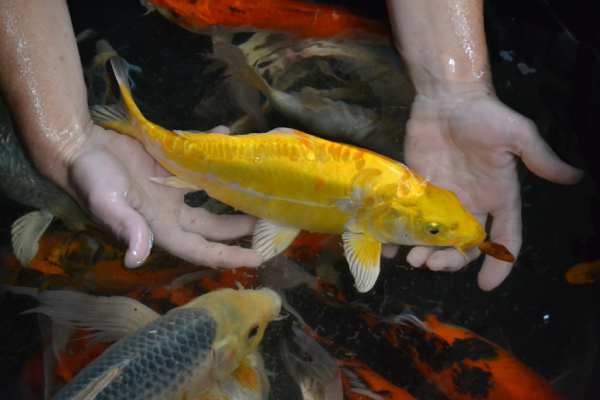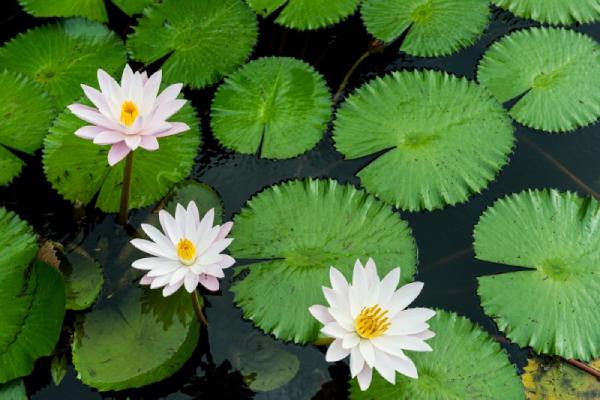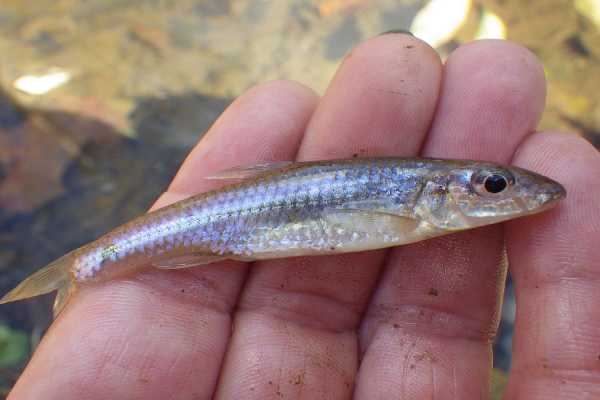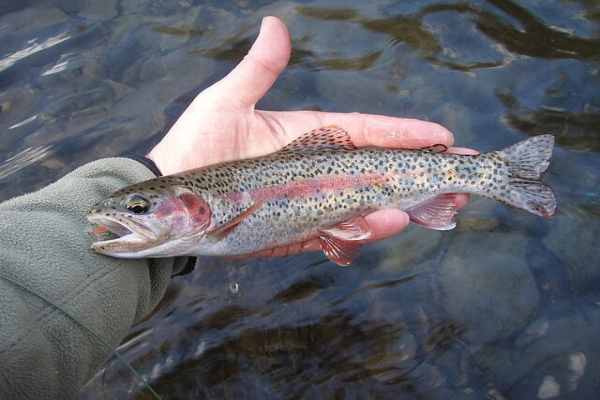Koi Fish Fins and Tails – Full Anatomy, Diseases & Treatment
Koi fishes are known for their vibrant colors and graceful movements, captivating the attention of fish enthusiasts and breeders.
The delicate architecture of their tails and fins adds to their attractiveness and plays an important part in their ability to swim and survive.
Understanding the various sections of a koi fish tail and the different types of fins they possess can provide valuable insights into their health, behavior, and quality.
In this blog post, we’ll look at the fins and tail of a koi fish, dissecting them down to their component parts and discussing the role they play in the fish’s overall physiology.
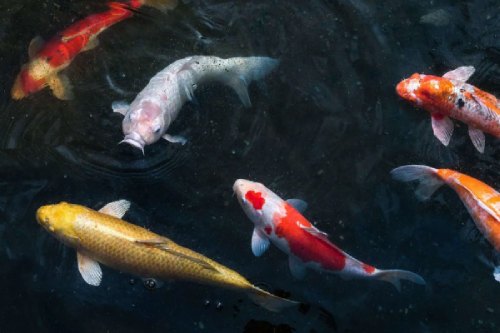
We will also elaborate on the various types of diseases that may affect koi fish, their symptoms, and how to treat them.
So, if you have a koi fish or you’re a koi fish enthusiast, then keep reading because this blog post is for you. Now, without further ado, let’s get into it.
Koi Fish Fins and Shape
Despite the fact that koi fish are famous for their brilliant patterns and fluid motion, they are also distinguished by a special pair of fins.
Learning about the variety of fins and how they function will help you better understand these fascinating fish.
The fins of koi fish are intricate structures, which we will discuss in this section. So, keep scrolling.
Pectoral Fins
Koi fish possess three sets of pectoral fins located behind each side of their bodies. These fins consist of one long ray accompanied by multiple shorter rays
Your koi fish’s pectoral fins are essential for balance and control while swimming. They are able to swim gracefully and precisely by manipulating the location and movement of their fins.
Pelvic Fins
The four pelvic fins located between the anal hole and the caudal peduncle help your koi fish maintain balance and control while swimming.
These koi fins, along with the pectoral fins, help the fish swim smoothly. The intricate coordination of both sets of fins enables koi fish to exhibit their characteristic fluidity and elegance in the water.
Dorsal Fin
The koi’s dorsal fin, which extends from its head to its tail, is a defining physical feature. The dorsal fin is divided into two parts, each serving a distinct purpose.
The initial section is made up of gentle, featherlike rays. These gentle beams improve balance and steadiness in the water.
Denticles are strong, pointed spikes that make up the second section of the dorsal fin. The koi fish relies heavily on these denticles to keep its body steady as it swims forward.
Caudal Fin
One of the most eye-catching features of a koi fish is its caudal fin, sometimes known as the tail fin. Each variety of koi is distinct from all the others due to its own size and shape of the caudal fin.
The koi’s caudal fin is an essential part of its propulsion, creating the thrust that drives the fish ahead. The koi’s caudal fin also acts as a rudder and brake, allowing the fish to maneuver with dexterity and precision.
Anal and Ventral Fins
The koi anal fin is situated next to the anus, whereas the ventral fins are on the fish’s underside. These fins help the fish maintain its equilibrium and stability, allowing it to swim effortlessly.
The koi’s anal and ventral fins aren’t as flashy as the dorsal and pectoral fins, but they’re important for the fish’s stability and propulsion.
It’s important to note that koi are air-breathing fish, meaning they use their swim bladder instead of gills. They can stay underwater for long periods of time without having to surface for air.
The koi fish’s mouth sits right below its eye socket. Its tiny, sharp teeth are adapted for snatching tiny prey items like insects and worms. Koi don’t bother chewing their food before swallowing.
Anatomy of the Koi Fish Tail
The tail of your koi fish is divided into various portions, each of which has its own characteristics. In this section, we will go over the anatomy of a koi fish tail, so keep scrolling.
The Base
Where the tail of your koi fish attaches to the body is called the tail’s base. It’s the backbone of the tail; it holds everything together.
The base is often wide and solid, giving the tail stability and strength when in motion. The proportions of the tail are affected by the size and shape of the base, which can vary between koi fish varieties.
The Middle Section
This section highlights the tail’s main body, showcasing the patterns, colors, and scales that set individual koi apart.
The length, width, and shape of the middle section of your koi fish can vary considerably based on factors such as its genetic make-up, age, and breed.
The tail of some koi fish may narrow gradually from the base to the tip, whereas the tails of others may be of uniform width.
The Upper Section
The region of the koi fish tail above its apex and closer to its base is known as its upper section. In several koi fish, this area has a more prominent curve, creating a beautiful arch that draws the eye.
The widest and most impressive part of the tail is the top section, where the volume and width begin to increase.
The fish’s agility in the water is helped by the shape and curve of its upper section, which allows it to execute precise movements and quick rotations.
The Lower Section
The lower part of a koi fish’s tail reaches all the way down from its middle to its tip. The slope in this part is typically less steep and more gentle than in the upper part.
The lower section of the tail is an important part of the whole, as it helps the fish stay upright in the water.
The fish’s size and form affect its propulsion through the water, allowing it to glide effortlessly and perform precise maneuvers.
The Tip
The last part of a koi fish’s tail that gradually narrows to a point is called the tip. This segment of the tail is typically the most intricate and beautiful, with elaborate patterns, bright colors, and fine fin rays.
Depending on the variety of koi fish, the tail fin may be round, square, or even slightly forked. The contrast it creates at the tail’s thinnest point is what really makes it stand out.
Now that you have a clear understanding of the anatomy of a koi fish tail, let’s quickly look at various diseases that may affect your koi fish tail, their causes, and possible ways to treat them.
Koi Disease Diagnosis and Treatment
Your Koi fins could be affected by any of the following diseases;
Tail Rot
The bacterial infection known as “tail rot” or “fin rot” primarily affects the fins and tail of koi fish, though it can spread to other body parts. Aeromonas and Pseudomonas are just two of the bacteria that might cause this condition.
The possible signs of tail rot are fin’s discoloration, inflammation, and even ulceration. Water contamination, overcrowding, emotional stress, and physical trauma are all potential contributors to the onset of tail rot. You know, when fins are injured or weakened, bacteria can easily infect them.
There are a variety of options for treating tail rot in koi fish. Safe and appropriate treatments developed to aid in the recovery of your koi fish’s tail and fins can be used in the early stages. These treatments are safe for the koi and won’t harm the aquatic environment.
Treatment with antibiotics may be necessary, however, if the tail rot has spread extensively and is towards the base of the tail or fins.
Antibiotics, if used carelessly, can negatively affect water quality and encourage the development of drug-resistant microorganisms. These dangers can be lessened with careful dosing and sticking to the prescribed treatment.
It is also important to monitor the pH, ammonia, and nitrate levels of the water in your koi pond on a consistent basis, you can read about koi pond plants that add beauty and also nutrients to your koi fish. The health of your fish will suffer if any of these values are off.
Diseases in aquarium fish are often managed by quarantine, but koi fish pose a special problem because of their larger size. It is not always possible or effective to remove sick koi from the pond or habitat.
Instead of isolating individual fish, treating the underlying source of the problem within the habitat setting is essential for stopping the development of fin rot.
The health of your koi fish and the luster of their fins and tails can be improved and preserved by careful management of the aquarium’s water, food, and environmental stressors.
Keep in mind that the long-term vigor and vibrancy of your cherished koi depend on a healthy and harmonious aquatic habitat.
White Spot (Ich)
Ichthyophthirius multifiliis, is a protozoan parasite that causes white spots on the fins of koi. The disease manifests itself on the body, fins, and gills of the fish as tiny white dots that look like grains of salt. Fish with the infection may scratch and show other signs of irritation.
Stressful and dirty water environments are ideal for Ich parasites. Fish, polluted equipment, or even plants might introduce them to your pond too.
To treat the parasite, gradually raise the water temperature to between 28 and 30 degrees Celsius (about 82 degrees Fahrenheit).
You can also help your koi fish recover by adding aquarium salt at a concentration of 1-3 grams per litre. Common commercial therapies for Ich include formalin, malachite green, and copper sulfate. It’s also important to keep the affected fish under strict observation during treatment.
Bloat
It is characterized by the abnormal swelling of the fish’s body due to fluid accumulation. The fish may take on a pinecone shape when its abdomen swells and its scales protrude.
Infections, disorders of the kidneys or liver, bad water, and injuries to internal organs are just a few of the many causes of bloat. In order to treat bloating effectively, it is necessary to identify its underlying cause.
You will have to place the infected fish in a separate quarantine tank with ideal water conditions. If the bloating is due to a bacterial infection, you can treat it with antibiotics. However, if the fish’s condition does not improve, euthanasia may be considered.
Lethargy
Lethargy is a common symptom observed in sick koi fish. It is characterized by a loss of appetite, slow swimming, and a lack of activity. It can be a sign of various underlying health issues.
Factors that contribute to lethargy include subpar hydration, emotional or mental strain, parasite or bacterial infections, organ failure, and systemic illnesses.
The key to treating lethargy in koi fish is pinpointing the underlying cause. Beginning with regular water changes, good filtration, and a steady pH and temperature, water quality can be greatly enhanced.
You can treat your koi with antibiotics or anti-parasitic drugs if a bacterial or parasitic infection is suspected.
Lethargy in your koi fish can also be reduced by providing a stress-free habitat with hiding places and minimizing overcrowding. In addition, providing healthy food helps strengthen your fish’s resistance to disease and speed up their recuperation.
Scales
Scale issues in your koi fish can manifest in different ways, including discoloration, peeling, or irregular growth.
Flaky or missing scales, black spots, or elevated bumps on your koi fish’s body are all symptoms of this koi fish disease.
Scale issues may result from a variety of factors, including bacterial or fungal diseases, parasitic infestations, subpar water quality, trauma, or underlying health concerns.
You can treat scale issues, but only if you are able to identify the underlying cause. Enhancing water quality and keeping your pond clean are also crucial.
Antibacterial and antifungal drugs can be helpful if a bacterial or fungal infection is suspected. Potassium permanganate or formalin, for example, may be used to cure parasitic infestations. Clean water and topical treatments can also be helpful in the case of a physical injury.
Conclusion
You can tell a lot about the health, swimming abilities, and general attractiveness of a koi fish by looking at its tail.
Breeders and enthusiasts of koi fish often place special emphasis on the tail and fin when determining the value and quality of the fish.
Despite the fact that its tail and find are used in assessing their worth and attractiveness, Koi fish are susceptible to a number of common ailments, such as Tail Rot, White Spot (Ich), Bloat, Lethargy, and Scales,
Understanding the symptoms, causes, and different koi fish treatment options for these diseases is vital for maintaining the health and well-being of koi fish.
Effective prevention and management of these koi fish diseases is possible through measures such as routine water quality monitoring, the provision of a stress-free atmosphere, and quick treatment.
Read Also: UV Light for Koi Ponds: All You Need To Know
FAQs
Koi fish have a number of uses for their fins and tails. They make it easier to swim, balance, and move around in the water. In addition to being an essential part of any breeding display, they also provide insight into the fish’s overall vigor and health.
Diseases that affect the fins and tails of Koi fish include tail rot, white spot, scales, Lethargy etc. These diseases may originate from contaminated water, contracting a bacterial or fungal infection, being parasitized, or suffering an injury.
Maintaining high standards of water quality in your koi pond is essential for warding off infections that affect the fins and tails of your fish. Proper filtration systems and routine testing of water are necessities. If you care about the health of your fish, you should avoid overpopulating the pond and feed them a balanced diet.


![Do Fish Get Bothered by Pond Lights? [Pond Lighting]](https://pondmemo.com/wp-content/uploads/2023/08/do-fish-get-bothered-by-pond-lights-img_1.jpg)
